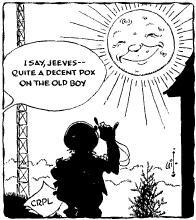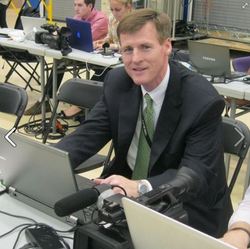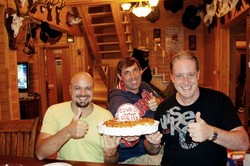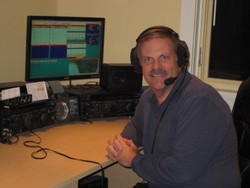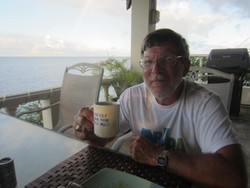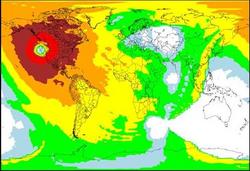 November 21, 2012 Editor: Ward Silver, NØAX | ||||||||
IN THIS ISSUE
NEW HF OPERATORS - THINGS TO DO The biggest CW DX contest of the year - CQ WW CW - is here! You can work a lot of DX with just a modest station on CW and the bands will be full. Know your CQ zone and have at it! The following weekend is a day-night doubleheader of the 10 Meter RTTY Contest in sunlight and the ARRL 160 Meter Contest - another CW festival - in the dark hours. I hope you have a full coffee pot! BULLETINS A weekend fire at the V26B station destroyed the shack and caused the host, Roy V21N to suffer some smoke inhalation from which he recovered overnight - best wishes, Roy! Thus, V26B will not be active this weekend but operator Bud AA3B plans on lashing a station together and operating with an alternate V26 call sign. Elsewhere, impassable roads have resulted in the cancellation of the planned V47NT activity in CQ WW CW by Andy N2NT. Hurricane Sandy also did major damage to the QTH of CO8LY, destroying his ham shack and home. BUSTED QSOS A golden issue last time - perhaps that will translate to a low error rate for you editor in his contest adventures! CONTEST SUMMARY Complete information for all contests follows the Conversation section Nov 24-25
Dec 1-2
We've just gotten used to the idea of Low Power categories for Unlimited and Multioperator entries in ARRL HF contests - how about for VHF+ contests? Yes, two new categories have been added there, too, beginning with the ARRL January VHF Contest. First is the 3-Band category in which participants are limited to 100 W or less on 6 and 2 meters, and 50 W or less on 70 cm. This category is just right for those sporting an "all-band, all-mode" rig! To encourage new hams to give VHF+ contests a try without having to buy new equipment, the FM Only category allows operation with 100 W or less on the 6 meter, 2 meter, 1-1/4 meter, and 70 cm bands. Experienced VHF+ contesters will want to include FM capability to work these new stations. Remember to upgrade your logging software and operating aids to add these new categories well in advance of the January contest date.
Along with the FM-Only category, the ARRL Rookie Roundup offers yet another path to contest enjoyment on HF. The December 16th edition is the contest's CW event and is a great six hours of fun, encouraging the new hams to give their new-found Morse methods a try. If your club has been active in the other fall contests, here's an opportunity to keep the ball rolling by encouraging members to operate. Don't forget that individual operators can form teams! It will keep them in shape for the January North American QSO Parties, too. A new release of the Super Check Partial database files is now available with 44,295 calls in the MASTER.DTA file and 11,939 calls in the MASTERTTY.DTA file. You still have to copy what they send on the air, though! Make sure your CTY file of prefixes is also up to date well in advance of contests, big and small. (Thanks, Bob WA1Z) The FCC has just released a new NPRM that solicits comment regarding the creation of the new amateur band at 135.7-137.8 kHz and proposes to upgrade the amateur allocation from 1900-2000 kHz to primary status. There is quite a bit of other material addressing allocation through microwave. Watch for more detail on the ARRL website over the next week or so. In the meantime, changes to Part 97.301 and 97.303 are on pages 108 and 109 of the referenced NPRM document.
Don NR7X wrote a good article in Electronic Design about Amateur Radio in disasters. While the general thrust of the article is to educate non-ham readers, he raises a particularly important point for hams, "One can't just get a license, wait for a disaster, and show up," reminding us all of the need for training and practice. Contests are good operating training but you still need to know about emergency procedures and practices in your area. He also notes that as an incentive for training and practicing "You will learn useful stuff." (Thanks, Mike KA5CVH) The following books on early wireless technology are recommended by Dave W6NL:
If the worldwide spotting networks are flooding your band map to a distracting degree, here is a tutorial by Wayne WA1PMA on using VE7CC's CC User spotting network management software. More than just filters, the software is a tool set for making the spotting network give you the information you need. (Thanks, John K3TN) Ian G3NRW has updated his 160m Band Utilization Chart. It now shows the JT9 dial frequency at 1.8395 MHz. Send Ian any updates or additional details you might have. He also publishes a 30m Band Utilization Chart, a UK 60m Band Utilization Chart, and sponsors the Top Band Digital Group (TBD160).
With new licensees lining up for tickets, Fred K3ZO reports that the Thai telecomm authority (NBTC) has not changed the regulations which require an 8 wpm Morse test in order to upgrade to HF status. Building on May's successful exam session, 32 new hams were recently licensed and most of them should appear on the HF bands soon. Assuming they are just getting started, be gentle with them if they show up during CQ WW CW! What international events happened when the cook dropped the Thanksgiving dinner? Why, the downfall of TA, the destruction of BY, the ruination of SV, and the ascendance of HA! A tip of the Contest Update cap to our friends around the world on the occasion of the American Thanksgiving holiday. Web Site of the Week - WorldRadio Online propagation columnist, Carl K9LA has some great propagation resources on his web site including downloadable PDF copies of both NM7M propagation books and a slide presentation showing an update on Cycle 24. Carl is also busy working on the ARRL Handbook's chapter on Propagation and is the author of the annual IARU HF Championship results. More propagation resources have been published by Steve GØKYA, including a downloadable PDF eBook "Understanding LF and HF Propagation". You can also get regular propagation bulletins as part of your ARRL membership. WORD TO THE WISE A question this time - there is a specific slang term for the parts left over after a piece of equipment has been reassembled but runs fine without them. Does anyone know that term (no fair just making one up and naughty ones are not appreciated) and have any documentation of it? The latest online webinar is a presentation by tower and antenna mavens John W2GD and Don K4ZA, "...outlining things we've learned from almost 100 years of combined experience, focusing on safety, cost-savings, and problem-solving." The date is Wednesday, December 12, at 9 PM EST (Thursday, Dec 13th at 0200 UTC) and registration is free, courtesy of the World Wide Radiosport Operator's Foundation (WWROF). (Thanks, Ken K4ZW)
And you wondered why they were called paddles? (Thanks, Kirk K4RO) I think all the little pistols out there can identify with this song by NT8K. (Thanks, Tim K3LR) Finally, those of you who frittered away hours and hours in the pre-Dungeons and Dragons era by programming the Game of Life and experimenting with different starting patterns (this is somewhat autobiographical) will enjoy and marvel at the new floating-point implementation of the called Smoothlife. Lots of activity at the ARRL Contest Branch Bar and Grill - manager Sean KX9X reports that online, expanded writeups for the June VHF and August UHF Contest have been posted. In addition certificates for the 2011 160 Meter, 2011 10 Meter, and 2012 RTTY Roundup contests are either shipped or about to be shipped. Keep an eye on award status for ARRL contests online! Meanwhile, over at the Log Submission Corral, the numbers just keep rising: even with hurricane Sandy's depredations, 1259 CW Sweepstakes logs were received before the deadline and 960 Phone Sweepstakes logs have been received thus far.
CQ World Wide Contest Manager, Randy K5ZD reports, "The raw scores for CQWW SSB 2012 have been updated to correct a multiplier scoring problem with some Zone 2 stations. Thanks to KF2O and W2JU for making inquiries that resulted in helping us find the score calculation error. We currently have 7999 logs received." OPERATING TIP The joy of socks? Siggi TF3CW suggests wearing knee-high compression socks to reduce leg swelling from sitting for long periods of time in a contest. (and maybe in a plane, too) These thin socks improve leg circulation. Don't forget Alan K6SRZ's suggestion of taking a low-dose aspirin to reduce the probability of blood clots, as well. I confess to wearing some extra-special pairs of hand-knit socks for contests - thanks, Mom! Frank W3LPL checked in with some solid engineering advice for antenna systems. "In the real world, receiving (or transmitting) problems are often caused by faults rather than by inadequate design. The most common problems are connectors and deteriorated coaxial cable caused by poor installation practices and moisture entry. Faults are best found through regular inspections, rather than (as many of us do) waiting for the fault to become so severe that it's obvious. A resistance measurement of your transmission line performed inside your shack takes only a few seconds and will reveal many of the most common faults. A VSWR sweep with an MFJ-259 or your favorite instrument is also very useful. VNA (vector network analyzer) and TDR (time-domain reflectometer) measurements are also very helpful if you have that capability (you should!). Keep records of your measurements so that changes will be apparent. Any change is cause for an investigation." Many of us use surplus ½-inch CATV hardline for long cables to antenna farms. Stan K5GO describes his method of attaching a PL-259 to the line - "I use about six inches of .625" OD (5/8") x .058"-wall tubing slit about 2.5 inches and four times on either end to fit over the back of the PL-259 and outer jacket of hardline and used some hose clamps. (It) takes about ten minutes start to finish and cost is minimal. A little Penetrox, some Scotch 88, a soldered center conductor and I've not had a problem in eight years." (Thanks, Stan K5GO)
If you need an audio mixer in the shack or elsewhere, Don W3FPR recommends the inexpensive Behringer or Xenyx 802 model. "It is a small pro-type mixer, but you can mix up to 2 stereo channels, plus 2 mono channels plus one "tape.CD" input - each with individual level controls. The output is headphone level. It (also has) faders and a three-band equalizer for each channel." Terry WAØITP also found a website with several good mixer designs if you like rolling your own. Use caution when using a compressed-air antenna launcher made of PVC. Grant KZ1W warns that, "...minor damage can escalate into ruptures and high-energy flying slivers and fragments...Handling damage can be concealed, cold is bad since the plastic gets brittle, and heat is bad because the pressure rating is significantly reduced. Making [the gun] from Schedule 80 PVC pipe is probably safer, since the pressure ratings are much higher (and) the fittings much stronger. Good solvent gluing is extremely important as a 4" PVC cap on a pressure tank at 80psi has about 1000 lbs of force on it." In researching some old magazine articles, I stumbled on a home do-it-yourself project you just don't see much these days. The October 1924 QST article by 7AGI (before the days of prefixes) is titled "A 100-Foot Wooden Tower" and not much besides a saw and common hand tools was required. It was designed to hold wire antennas, not beams, and no word is given on whether it was climbable or not. The method of erection? A 40-foot gin pole! Here are some more modern do-it-yourself projects: - Sparkfun LogicBlocks kit for the young experimenter in the family And from the Instructables website: - An Internet connected control knob - Removable tablet and phone car mounts Recognizing that switch-mode power supplies can cause a lot of RFI, this EDN magazine article describes a power supply intended for use in mobile radio receivers. Trying to protect delicate receiver front ends from the marauding signals of a legal-limit RF amplifier a fraction of a wavelength away can be a challenge. This front-end saver design shows how OK1RR solves the problem. (Thanks, Jose EA7BJ) Where do you go to look up information about components and other bits of electronics, especially when you're not near your workbench library? The Radio-Electronics website answers a lot of those needs with this online collection of reference tables and compilations.
Technical Web Site of the Week - Stu K6TU has released an online propagation mapping and prediction tool you just won't be able to stop using! It uses the VOACAP prediction engine on a speedy server to generate hour-by-hour frequency coverage maps based on your specified geomagnetic conditions, the date, and your station characteristics. The web-based user interface is well-done and the results are fascinating! Gain Damaged Fans of Pink Floyd may remember the song "Brain Damage" about band leader Syd Barrett's descent into insanity. Sometimes Sunday afternoon of a 48-hour contest can feel a little like that - albeit thankfully temporary and quite reversible. At any rate, if you hit The Wall and the interference starts to Meddle with you...here are some new words you may find useful, courtesy Dr Beldar. The QRM is multi-path. The QRM is in the calls. And if the sunspots peak many years too soon The QRM is in my head The mike is stuck And if the thunderstorms clamor in your ear 21 November through 5 December 2012 An expanded, downloadable version of QST's Contest Corral in PDF format is available. Check the sponsor's Web site for information on operating time restrictions and other instructions. HF CONTESTS CQ World Wide CW Contest--CW, from Nov 24 0000Z to Nov 26 2400Z. Bands (MHz): 1.8-28. Exchange: RST and CQ zone. Logs due: Nov 30 SKCC Straight Key Sprint--CW, from Nov 28 0000Z to Nov 28 0200Z. Monthly on the fourth Wednesday UTC. Bands (MHz): 1.8-28, 50. Exchange: RST, S/P/C, name, SKCC nr or power. Logs due: 5 days. Website: www.skccgroup.com Top Band Sprint--Phone,CW, from Nov 29 0000Z to Nov 29 0600Z. Bands (MHz): 1.8. Exchange: RST, S/P/C, ARCI number or Power. Logs due: 14 days. Website: www.qrparci.org/contests ARRL 160 Meter Contest--CW, from Nov 30 2200Z to Dec 2 1600Z. Bands (MHz): 1.8. Exchange: RST and ARRL/RAC section if US/VE. Logs due: Jan 1. Website: www.arrl.org/contests TARA RTTY Mêlée--Digital, from Dec 1 0000Z to Dec 3 2400Z. Bands (MHz): 1.8-28. Exchange: RST and State/Province or serial. Logs due: Jan 1. Website: www.n2ty.org/seasons/tara_melee_rules.html Top Operators Activity Contest--CW, from Dec 1 1600Z to Dec 2 1559Z. Bands (MHz): 3.5-28. Exchange: RST, serial, and TOPS/PRO number. Logs due: Dec 31. Website: www.procwclub.yo6ex.ro AWA Bruce Kelly QSO Party--CW, from Dec 1 2300Z to Dec 2 2300Z. Multiple operating periods. Bands (MHz): 3.5,7. Exchange: RST, Xmtr type, power, name. Logs due: 30 days. Website: www.antiquewireless.org 10 Meter RTTY Contest--Digital, from Dec 2 0000Z to Dec 2 2359Z. Bands (MHz): 28. Exchange: RST and state or province or serial. Logs due: Dec 15. Website: www.rttycontesting.com SARL Digital Contest--Digital, from Dec 2 1300Z to Dec 2 1600Z. Bands (MHz): 3.5-14. Exchange: RST and serial. Logs due: 7 days. Website: www.sarl.org.za ARS Spartan Sprint--CW, from Dec 4 0200Z to Dec 4 0400Z. Monthly on the first Monday evening local time. Bands (MHz): 3.5-28. Exchange: RST, S/P/C, and power. Logs due: 2 days. Website: www.arsqrp.blogspot.com VHF+ CONTESTS SKCC Straight Key Sprint--CW, from Nov 28 0000Z to Nov 28 0200Z. Monthly on the fourth Wednesday UTC. Bands (MHz): 1.8-28, 50. Exchange: RST, S/P/C, name, SKCC nr or power. Logs due: 5 days. Website: www.skccgroup.com LOG DUE DATES 21 November through 5 December 2012
ARRL Information Click here to advertise in this newsletter. Your One-Stop Resource for Amateur Radio News and Information ARRL membership includes QST, Amateur Radio's most popular and informative journal, delivered to your mailbox each month. Subscribe to NCJ - the National Contest Journal. Published bimonthly, features articles by top contesters, letters, hints, statistics, scores, NA Sprint and QSO Parties. Subscribe to QEX - A Forum for Communications Experimenters. Published bimonthly, features technical articles, construction projects, columns and other items of interest to radio amateurs and communications professionals. Free of charge to ARRL members: Subscribe to The ARRL Letter (weekly digest of news and information), the ARES E-Letter (monthly public service and emergency communications news), Division and Section news -- and much more! ARRL offers a wide array of products to enhance your enjoyment of Amateur Radio. Visit the site often for new publications, specials and sales. Donate to the fund of your choice -- support programs not funded by member dues! Reprint permission can be obtained by sending email to permission@arrl.org with a description of the material and the reprint publication. ACKNOWLEDGEMENTS ARRL Contest Update wishes to acknowledge information from WA7BNM's Contest Calendar and SM3CER's Contest Calendar. | ||||||||
